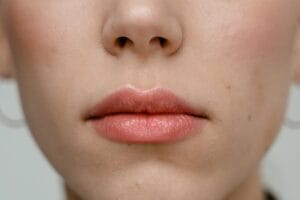Rhinoplasty Edema Recovery: Timeline, Tips, and What to Expect
Featured answer: Rhinoplasty edema recovery typically follows a predictable arc: the first 3–7 days are the most swollen, 2–6 weeks bring steady improvement, and 3–6 months reveal most definition, with subtle refinement continuing up to 12–18 months—especially at the nasal tip. Gentle care (elevation, cold compresses early, salt control, and surgeon-guided taping) helps.
Swelling after a nose job can feel unpredictable. One day it looks slimmer, the next it’s puffy again. If you’re wondering what’s normal, how long rhinoplasty edema recovery really lasts, and what actually helps (without gimmicks), here’s a clear, experience-backed guide you can use week by week.
What causes swelling after rhinoplasty?
Edema is your body’s normal response to surgical change. Tissue planes are lifted, cartilage is refined or repositioned, and small blood vessels are affected—so fluid shifts into the area. The nose also has delicate skin–soft tissue layers, with a tip that holds onto fluid longer. That’s why tip definition often lags behind the bridge.
Two factors shape your recovery curve more than most patients expect: surgical technique and your own biology. Meticulous handling of tissues, limited undermining, and precise closure reduce inflammation. Meanwhile, skin thickness, circulation, and even habits like sodium intake or sleep position nudge swelling up or down. It’s not a moral scorecard—just physiology.
Rhinoplasty edema recovery timeline (realistic expectations)
Days 0–3: Peak swelling and pressure in rhinoplasty edema recovery
This is the heavy period. You’ll likely feel pressure, congestion, and a sense that the nose is larger than you imagined. Bruising around the eyes (if osteotomies were performed) is common and starts to fade by day 5–7. Keep your head elevated, use cold compresses over the cheeks—not directly on the nose—and follow your surgeon’s medication plan.
Days 4–7: Edges soften in the rhinoplasty swelling timeline
Stiffness remains, but the overall look becomes less tense. If you have a splint, you’ll typically keep it in place until the first post-op visit. Don’t judge the shape yet. What you see now is at least partially the splint, tape, and swelling.
Weeks 2–4: You look less “post-surgery” in the rhinoplasty swelling timeline
Most patients can return to desk work by week two, sometimes earlier with virtual work. Edema shifts in predictable ways: mornings are puffier; afternoons settle. The bridge begins to define; the tip stays rounder. Light walking is good; avoid heart-rate spikes, bending, and heavy lifting.
Weeks 5–8: The quiet progress phase of rhinoplasty edema recovery
Now the nose starts to move with facial expressions more naturally. You’ll catch days where the contour looks “right” and others where the tip looks inflated again. This fluctuation is normal during rhinoplasty edema recovery and is often tied to salt intake, sleeping flat, heat exposure, or travel.
Months 3–6: Most definition appears as rhinoplasty swelling fades
Somewhere in this window, the back-and-forth feeling settles. Friends stop noticing swelling. Photographs look consistent. If your surgeon suggested tip taping, gentle massage, or steroid micro-injections for thick skin, decisions usually happen here based on how edema behaves.
Months 6–12 (and up to 18): Subtle refinement in rhinoplasty edema recovery
Thicker skin, complex tip work, or revision cases often need this extra time. It can feel slow, but the end result is usually worth the patience. Think of this as polishing rather than building—most of the shape is already there.
Practical tips to reduce swelling during rhinoplasty edema recovery
- Elevate consistently: Sleep with two pillows or a wedge for at least 1–2 weeks. Gravity is the simplest anti-swelling tool you have.
- Cold compress early: First 48–72 hours, use cool packs over the cheeks—not directly on the nose—10 minutes on, 10 off.
- Low-sodium rhythm: Restaurant food, cured meats, and packaged snacks push fluid retention. Home-cooked, fresh meals help.
- Hydrate and walk: Frequent small sips of water and gentle walks keep circulation moving.
- Hands off: Avoid pressing, pinching, or resting glasses on the bridge until cleared.
- Tape and massage: If your surgeon recommends them, they can guide edema and reduce tip puffiness. Follow exact instructions.
- Avoid heat and heavy exercise early: Hot yoga, saunas, and hard cardio can pump swelling back in. Ease up, then ramp slowly.
Supplements like arnica or bromelain are sometimes suggested, but evidence is mixed. During rhinoplasty edema recovery, always clear them with your surgeon first—especially if you take blood thinners or have allergies.
How rhinoplasty technique changes the edema recovery story
Open vs. closed approach is only one part of the swelling equation. What often matters more is how conservatively and precisely the soft-tissue envelope is elevated, whether cartilage reshaping is stable, and how internal support is built. Structural rhinoplasty—where grafts reinforce the framework—can yield long-term stability but still asks for patience while the tip learns its new position.
Primary vs. revision cases
Revision rhinoplasty frequently swells longer. Scar tissue alters blood flow and fluid movement, and the skin–soft tissue envelope may be less forgiving. That doesn’t mean a poor outcome; it means the timeline stretches. Many patients notice meaningful change by 3–6 months, but the “final-final” may be 12–18 months.
Thick vs. thin skin
Thick skin is slower to display tip definition; thin skin reveals structure quickly—sometimes too quickly, making small irregularities visible. Surgeons plan different strategies for each: camouflage grafts under thin skin; long-game edema management under thick skin.
When rhinoplasty swelling is not normal
Most edema follows the arc above. Still, a few warning signs are worth flagging:
- Sudden, asymmetric swelling with pain or redness
- Fever, drainage with odor, or expanding warmth in the skin
- Worsening congestion beyond the expected post-op period
- Persistent pressure headaches that don’t match your baseline
If any of these occur, contact your surgical team promptly. Early assessment is always better than watchful waiting when red flags show up.
Your week-by-week recovery checklist for rhinoplasty edema recovery
Week 1 of rhinoplasty edema recovery
- Sleep elevated every night; use cold compresses on cheeks
- Keep splint/tape dry; do not manipulate
- Short, easy walks twice a day
- Focus on low-sodium meals and hydration
Week 2: reduce swelling after rhinoplasty
- Most patients resume light work; still avoid heavy lifting
- Ask your surgeon about taping and shower routine once splint is off
- Expect morning puffiness; it should fade during the day
Weeks 3–4 in the rhinoplasty swelling timeline
- Add light cardio if cleared
- Keep sunglasses off the bridge; consider cheek-supported frames if essential
- Be patient with tip roundness—this is the long game
Weeks 5–8: steady rhinoplasty edema recovery
- Return to most activities gradually; watch heat exposure
- Discuss massage or steroid micro-dosing only if recommended
- Track patterns: salt, sleep, and travel often explain swelling swings
Common misconceptions about rhinoplasty swelling
- “I’ll know the result when the splint comes off.” Not quite. You’ll get a glimpse, but the tip and sidewalls are still in flux for weeks.
- “If I’m still swollen at 3 months, something’s wrong.” For many people—especially thicker skin—three months is mid-journey.
- “More ice fixes everything.” Early cool packs help, but long-term progress rests on elevation, salt control, and time.
- “Taping is universal.” It helps some noses and isn’t necessary for others. Follow your surgeon’s plan, not a forum trend.
How to talk with your surgeon about rhinoplasty edema recovery
Bring photos of good and bad days. Describe patterns you notice: “Mornings are puffy; after dinner it balloons,” or “After a long flight, it lingers for 48 hours.” These details help tailor guidance—whether that’s taping technique, dietary tweaks, or, rarely, a small steroid micro-injection in carefully selected areas.
Patient tip: Keep a 30-second daily selfie log for the first two months. Seeing the week-to-week arc often cuts down on worry because the trend is clearer than any single day.













